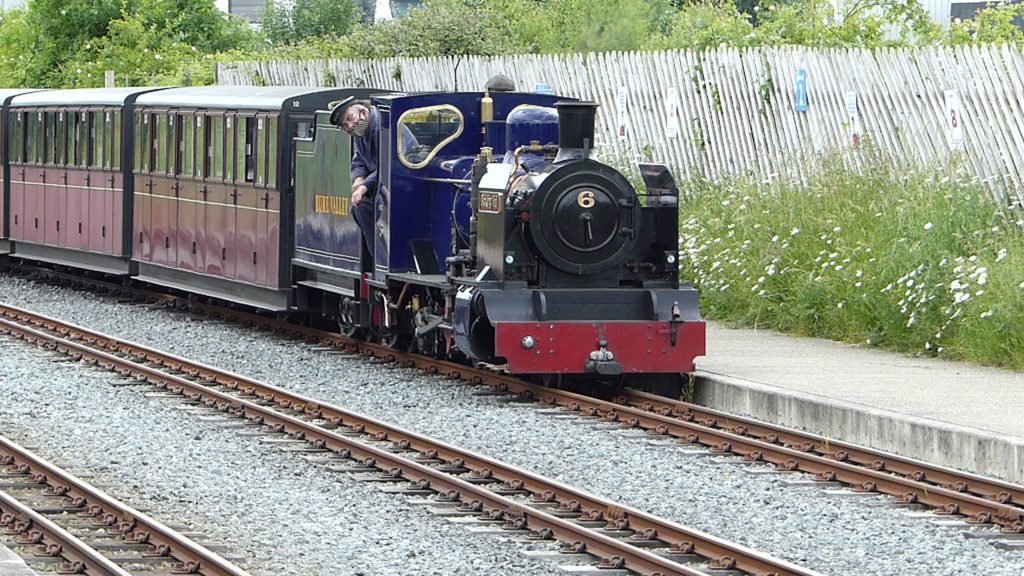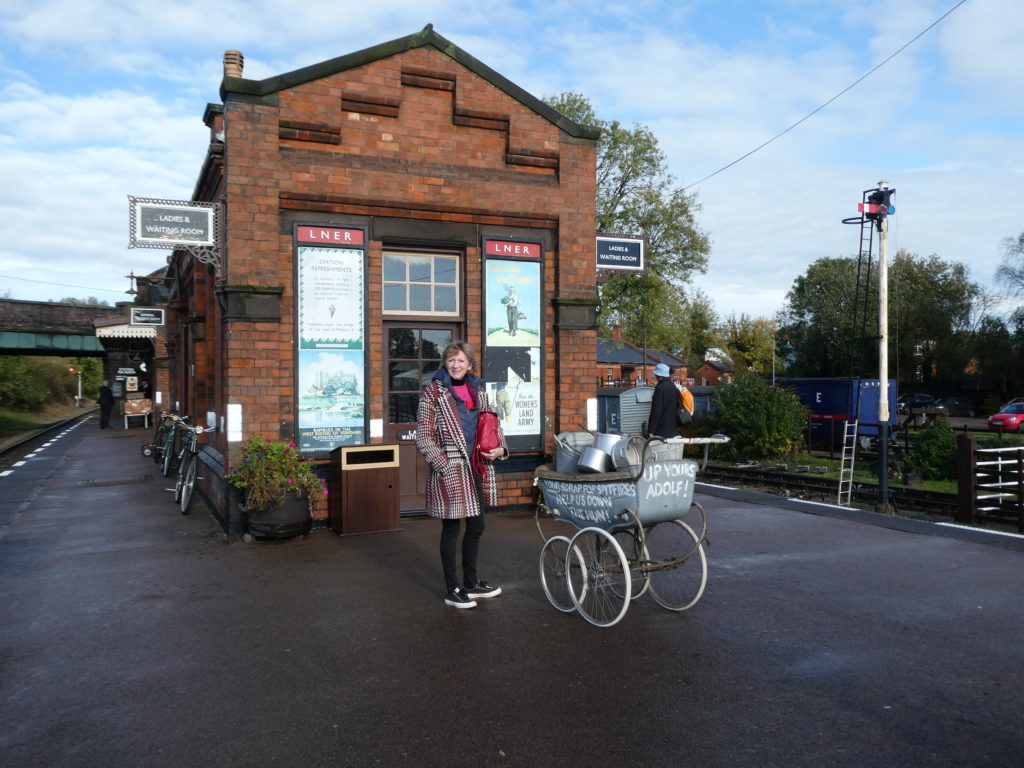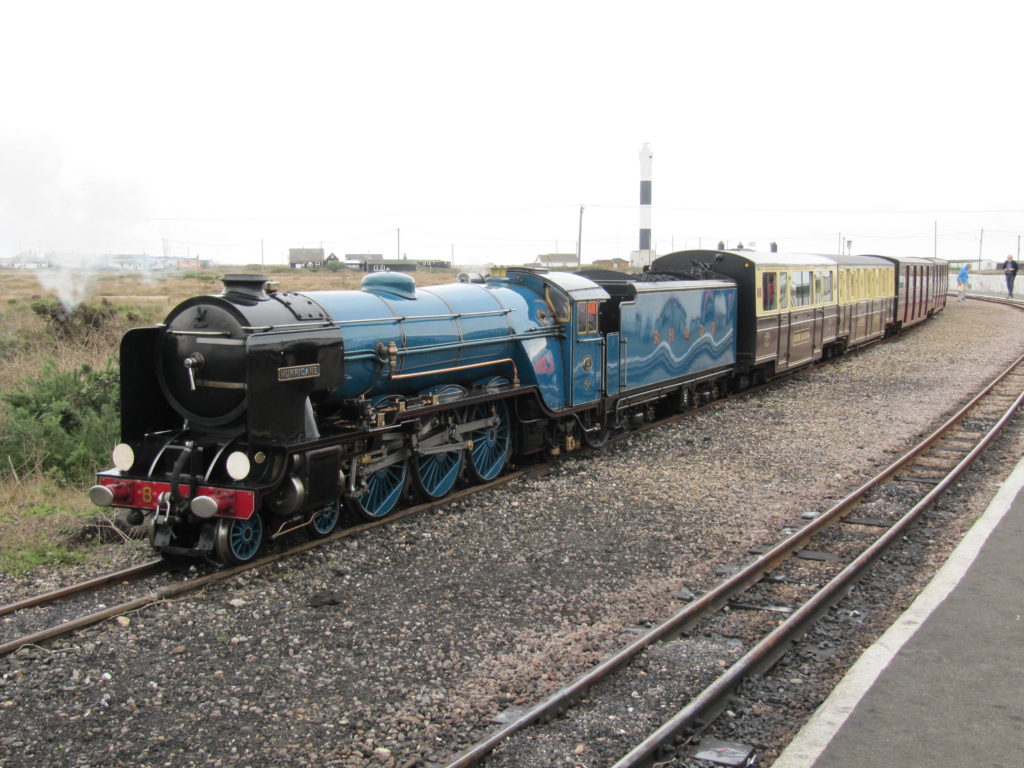In Issue 168 (October 2018) Rail Engineer published a heritage rail article titled ‘20th Century Heritage, 21st Century Safety’. Since then, Covid, 2022’s extremely hot summer, inflation, and staff/volunteer shortage have all meant significant challenges for heritage rail. It was with great interest, then, that we visited day one of the Heritage Rail Association’s (HRA) Autumn Conference in Birmingham in November 2022. The main themes for the day were safety, sustainability, and governance. Here are the highlights.
HRA’s chief executive, Stephen Oates, welcomed a very healthy turnout (nearly 200 people over two days) and outlined the challenges ahead based on a recent business confidence poll of his members.
Generalisation is risky, but just under half of the respondents had a worse 2022 than 2021 with operating surpluses reducing, unpredictable demand, and with a significant minority seeing customers spend less.
Some operators were struggling to attract sufficient volunteers, not necessarily caused by fewer new volunteers, but often because existing volunteers cannot work as many days due to pressures such as fuel costs for journeys to and from the railway. Most operators think their activities for the end of 2022 will see the same or higher numbers than in 2021. Looking ahead, most were expecting to open for the same of more days next year, but in terms of business confidence nearly 80% were unsure or not confident.
20th Century assets, 21st Century safety
Andy Castledine, an independent railway consultant, and Operations and Safety Director of West Somerset Railway (WSR), set the scene. He outlined WSR’s journey after a troubled time pre-Covid.
When he arrived, Andy said he found that WSR had a good rule book but that there were gaps in systems and processes which meant that “they couldn’t prove that the rule book was being complied with”. After several visits from the ORR, work to create a robust safety management system was implemented with a large action tracker sheet and keeping the ORR informed of progress.
Andy turned to the big picture. Most of the heritage sector works with obsolete assets, using old skills deployed by a largely volunteer workforce. This leads to a high risk profile that involves risks not seen on the main line railway. He presented some worrying statistics. For example, whether measured by mileage or passenger journeys, the heritage sector represents a tiny proportion of the national network but received a third of all ORR enforcement action.
Andy wondered: “Why are these factors so prevalent and do our systems, processes, and competence management systems recognise the fallibility of people?”
He added: “…are our medical standards adequate? Are our assessments adequate? Do we assess cognitive performance as it declines with age? Do we have adequate occupational health provision?”
Addressing all these factors will have a cost but Andy stressed that failure to do so would cost a lot more.
This has led HRA to conclude that something must be done and it is seeking to set up a Heritage Rail Safety and Standards Board (HRSSB). Andy said that discussions are taking place about whether the DfT or the Department of Culture, Media, and Sport should take the lead in funding HRSSB. He added that, as a fallback, the current HRA Operations and Safety Committee (which he chairs) might be expanded to produce more safety standards and additional technical advisory documents.
An inspector calls
Three representatives from ORR spoke. HM Deputy Chief Inspector for Railway Safety Richard Hines set the scene, echoing the Chief Inspector’s remarks in the 2021-22 Annual Report of Health and Safety on Britain’s Railways: “…Whilst it was reassuring that our inspections continued to find that individual railways were making progress to address gaps in their safety management systems, we did identify some significant shortcomings through our inspection and investigation work…”.
Richard said that his team recognised their role in keeping heritage alive for future generations, but he reiterated Andy Castledine’s point that 21st century levels of safety were required despite using old assets, adding that in current economic conditions some hard decisions might be required, e.g., if considering deferring maintenance, the risks of so doing must be properly evaluated. Richard also emphasised the importance of skills and knowledge in governance rather than ‘time served’, before adding that ORR supports the creation of HRSSB and is actively helping to secure funding.
Reflecting on the last year, Patrick Talbot, HM Assistant Chief Inspector of Railways and head of the non-main line team, said that the ORR’s Risk Management Maturity model shows the heritage sector in general is working between ‘ad-hoc’ and ‘managed’ – the lower levels of the maturity model. Two enforcement notices had been issued, there had been a number of operational incidents (two of them serious), asset management of both trains and infrastructure is an issue, and competence management is an underlying factor in many incidents. He illustrated the condition of cast iron columns, uncontrolled movement of rail vehicles and working at height as current concerns.
Investigation
Alongside a representative of the railway concerned, Simon Barber, HM Principal Inspector of Railways, presented a case study of the investigation following a collision. A locomotive was being driven into a platform to couple to a train where passengers were boarding. It was driven by someone not yet passed out to drive that loco, under the supervision of a traction inspector.
The driver misjudged the distance and collided with the train at low speed causing minor injuries to a small number of the 175 people on board the train. ORR undertook a site visit, held discussions with staff and reviewed records, CCTV, photographs, and the railway’s safety management system/supporting documentation.
The inspector found that the railway could not demonstrate the competence of the traction inspector and an Improvement Notice was issued. The railway’s representative had quickly identified that the root cause was human error. As the ORR investigated, the railway thought that its computerised operations management system would demonstrate appropriate competence but found that the computer system had been relied on too much without auditing the paperwork inputs.
It was after this discovery, and following a round table discussion between the railway’s management and the ORR inspector, that the Improvement Notice was issued, something that the railway felt amounted to a joint decision. An external consultant helped them to improve the competence management system and the Improvement Notice was closed on time.
Governance duties and structures
Returning to governance, Nick Dunn from Wrigleys Solicitors outlined the importance of setting up and maintaining the right structures to ensure that railways can deliver their objectives. Whilst having an appropriate structure is important, it is also vital to have the right people round the boardroom table. The right structure with the wrong people will not work. The wrong structure with the right people will only keep going as long as all these people continue to work well together, and nothing goes wrong.
Nick outlined five structures that could be used, noting that the first two and the last are most frequently used:
- Company Limited by Shares (CLS): Shareholders own the company; profits can be withdrawn as dividends; cannot be charitable; hard to raise money from the public.
- Company Limited by Guarantee (CLG): No shareholders, members instead; cannot easily withdraw profits; can be charitable; can raise funds from donations and debt.
- Charitable Incorporated Organisation (CIO): A bit like a charitable CLG registered solely though the Charity Commission.
- Community Benefit Society (CBS): A bit like a CLG but regulated by the Financial Conduct Authority (FCA); must be set up based on model rules from a ‘sponsor’ and must be ‘for the benefit of the community’.
- Unincorporated Association (UA): very flexible but no limited liability.
Nick highlighted that typically, heritage organisations might set themselves up as CLGs at the top level but set up one or more subsidiary CLS companies to allow the CLG to receive profits from trading.
He also reminded everyone about the duties of directors. They must: act within their powers; promote the success of the company; exercise independent judgement; exercise reasonable care, skill and diligence; avoid (preferred) or declare conflicts of interest (for example, someone might sit on the heritage railway board and on the board of a company that owns rolling stock that runs on the railway); and not accept benefits from third parties.
Asset management
Heritage railways have to manage old assets. Compared with what is typical on Network Rail, they are often able to take line closures to enable inspection to be carried out during daylight. Heritage railways also represent ‘safe spaces’ for organisations to test new techniques. David Gent from ECSL, a bridge inspection specialist, outlined some of the techniques his company uses for clients including about a dozen heritage railways.
He described a number of constraints that create inspection and assessment challenges for heritage railways including: limited access to expertise to understand structures/materials; being tied to standards which are geared towards modern structures/materials; together with financial, site, programme, and access constraints. Tools and techniques include laser and drone surveys, with many of ECSL’s surveyors qualified as drone pilots. David showed an example where a turntable whose operation was stiff was found to have a very small deviation on its track which was revealed in a laser survey.
Timothy Pennock from Collins Aerospace discussed how airborne reconnaissance systems might be adapted for railway applications. Cutting a long and complicated story short, the principle is that sensors are used to create repeatable 3D images that can be overlaid and analysed for variations. Tim demonstrated how spalling of bricks forming a tunnel might be determined from this data acquisition and analysis, a process requiring far less access than would be necessary if carried out manually. He proposed how this process might be extended to the permanent way giving information about the track itself and the general area between boundaries.
Carbon neutral?
Ian Purkis, who volunteers with the Keighley and Worth Valley Railway and Paul Vidler, a volunteer for the Kent and East Sussex Railway, delivered a presentation titled ‘What Does a Carbon Neutral or Environmentally Responsible Railway Look Like?’. They said: “Heritage Rail may only burn a tiny fraction of the coal burnt in UK (e.g., steel, cement) but that doesn’t make it any easier or even possible to be carbon neutral. The same applies to diesel fuel, again a tiny fraction of total UK use.”
Their interpretation was that carbon emitted should be equal to or less than the amount absorbed or stored.
But it’s not just about coal and diesel, they mused:
- Carbon – is it just carbon or does it include other emissions such as methane?
- Does the change in carbon storage capacity of land that you control (trees, soils etc.) count?
- What about emissions from indirect use e.g., electricity and emissions from things you have bought?
- Are you responsible for emissions by your visitors, staff, and volunteers travelling to/from site?
- How far ahead do you look? Is it a plan for 50 years? (20 years or less won’t include full benefits from growing trees, for example).
They showed figures to demonstrate that planting a tree to offset CO2 from coal requires an unsustainably large number of saplings.
They were forced to conclude that it is unlikely that a carbon neutral heritage railway can exist, but that decarbonising in every possible way is good for the environment and as a way of engaging with visitors and stakeholders. This must start from the top with board and management commitment and strategy for sustainability and protection of the environment (there is HRA guidance). They should communicate though the railway’s website, briefings, presentations, and newsletters to demonstrate that the environment and sustainability is embedded within all aspects and all levels of the business.
Further green concerns
Clearly, extending the life of vehicles, equipment, materials, and buildings that would otherwise go to scrap is a key sustainable activity. Generally, heritage railways have been recycling scrap metal for many years.
Numerous examples were presented demonstrating care for the environment whilst making the railway more attractive such as station gardens with bee-friendly plants, bird boxes, bug hotels, and more extensive work such as lineside habitat conservation. And then helping educate visitors about what has been done including leaflets, children’s activity sheets and on-train guides.
As a final point they expressed the view that heritage railways really must end the practice of discharging toilet waste from passenger coaches onto the track, something that must end on heritage vehicles on the main line by 2023.
This was a very wide-ranging event including a second day about more commercial matters which Rail Engineer did not attend.
With thanks to the Heritage Railway Association’s Mark Pearce and Amy Sugrue for their help.
Heritage Railway Association
There’s more to heritage rail than just the trains. It’s a sector that has grown continuously since the 1950s and generates enormous benefits for communities throughout the UK.
The UK heritage rail sector is an important component of the tourism industry, generating value to the UK visitor economy. It is a key element of many tourists’ holidays. The sector protects, conserves, and brings to life part of the nation’s cultural heritage, and helps to promote the UK around the world.
Heritage rail provides social, community, and wellbeing benefits to employees, volunteers, and visitors throughout the UK.
The Heritage Railway Association represents:
- 173 working railways
- Nine operational tramways
- Eight cliff railways
- 24 museums and steam centres many of which operate trains on selected days
- 17 commercial partners
- 100 societies, funding groups, and locomotive and carriage owning trusts
- 22,000 volunteers
- 4,000 paid employees
Its members own or operate:
- 560 miles of track
- 460 stations
- 800 steam locomotives
- 1,000 diesel locomotives
- 2,000 carriages
- 4,000 wagons
Its impact on the UK economy:
- 4,000 employees
- £400 million economic value
- 13 million visitors who take 18.6 million passenger journeys covering 130 million passenger miles.




